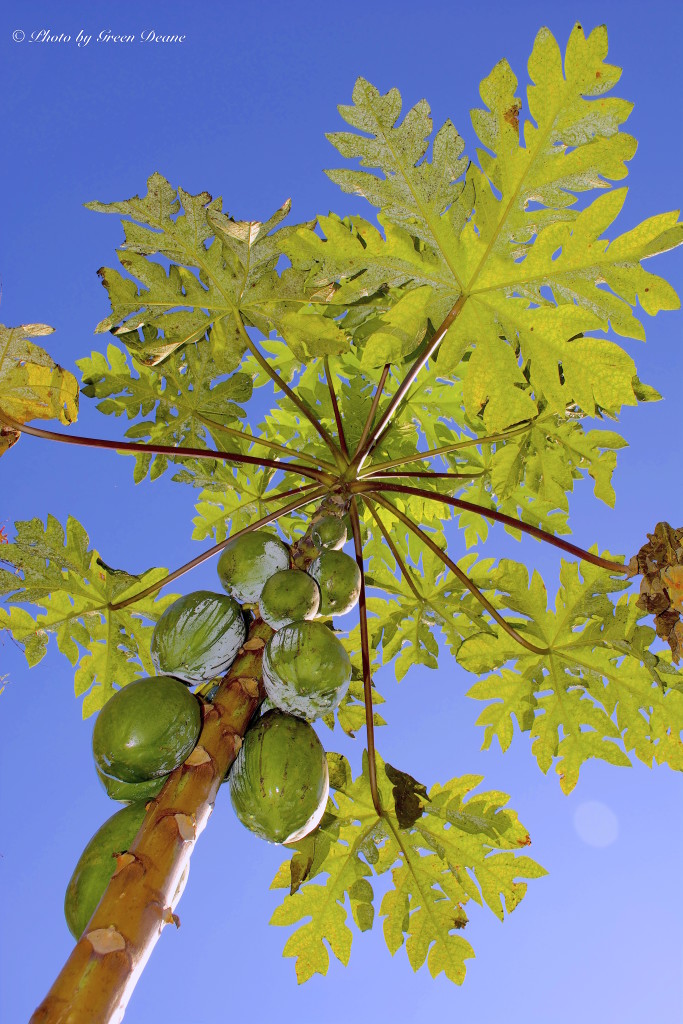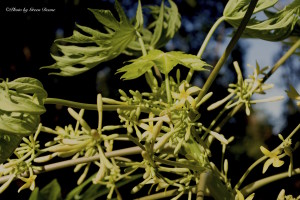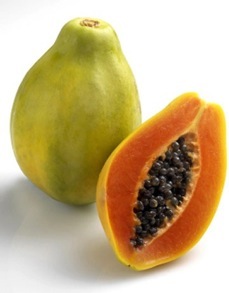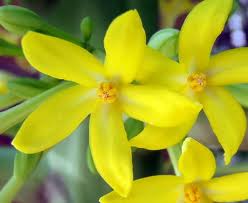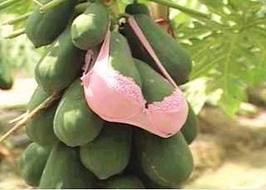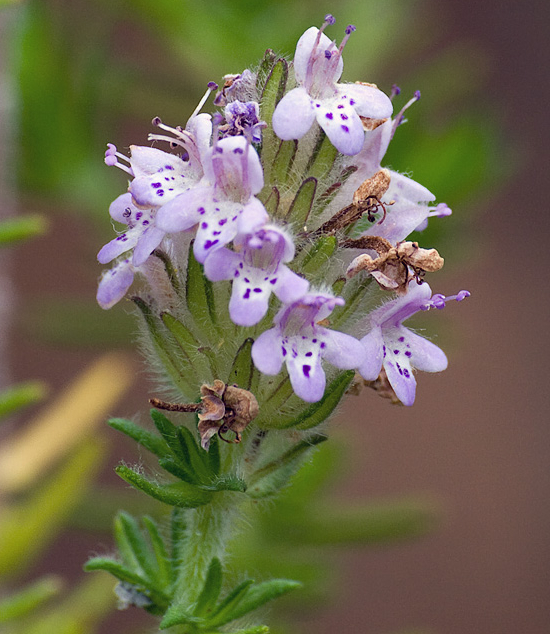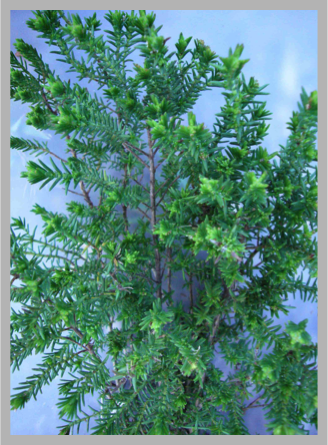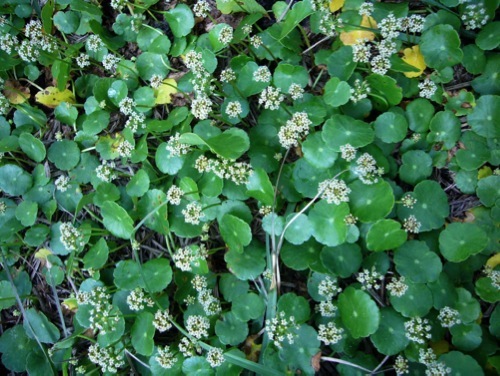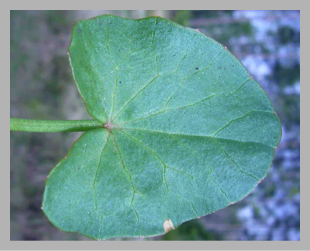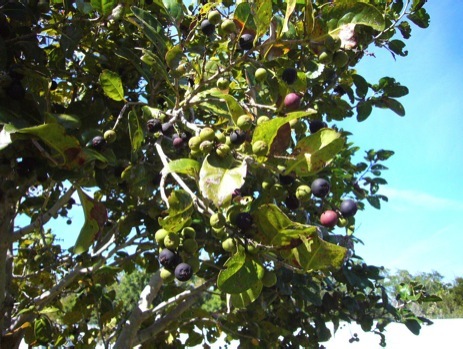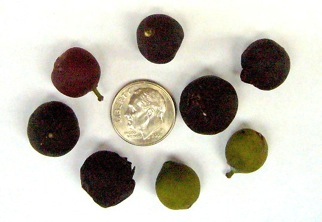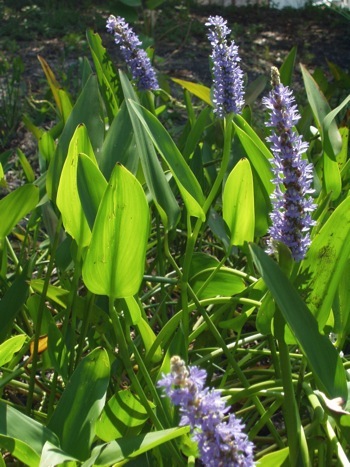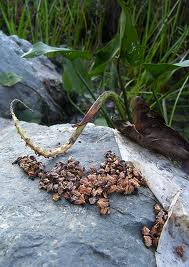Carica papaya: Survivalist plant
Papaya comes from the grocery store, unless you live where it seldom freezes. Then it is another wild edible, naturalized in most warm areas. And there’s more to it than just the fruit. But first, what is it?
Surprisingly there is a debate whether the papaya (Carica papaya KAIR-rick-uh puh-PYE-yuh)) is a tree or an herb. It seems to meet the expectations of both. They fudge the difference and call it a giant herbaceous plant, one that can grow 10 feet a year and to 30-feet high.
My first introduction to papaya was a retired postman in Rockledge, Fl., who terraced his very small house lot to grow hundreds of papayas of all kinds and shapes. He was a home-spun naturalist who dug up mastodon teeth on the weekends and grew the largest papayas I’ve ever seen.
Papayas can also surprise you. I grew one for about eight years but had a constant problem with papaya flies ruining the fruit. Yet papayas growing wild on the east coast at Turtle Mound survive elevation, frost, freezes and fruit flies. Like the banana the papaya is more than its fruit, which can be cooked when green or eaten raw when green or ripe. The young leaves and flowers are edible boiled, and the inner pith of the main stalk is edible raw. The roots are edible if boiled a long time. And if you run out of soapy washcloths the older leaves have saponins and can be used as a wash cloth. Now, let’s go where few have gone.
First, the papaya is a berry. Yeph a berry. And it is in the family as maypops, Passifloras, which makes sense as the leaf and fruit structure are similar. Most folks toss the black seeds away but they are edible, too. They are peppery and can be used like pepper. They also stay viable for three years. Papayas are native to Central American and moved around the world with Spanish exploration in the 1500’s. Surprisingly the papaya did not get to Florida until the 1900’s from the Bahamas. Not bad for a runt. You see, papaya was domesticated in Central America from weedy and almost inedible original plant. It has experienced significant changes in fruit size, growth habit, and flesh color under human cultivation. It was first mentioned in 1526 by Oviedo.
Papayas pack a nutritional wallop: Per 100 gram edible portion papayas are water 88%, calories 43, protein 0.6%, fat 0.1%, carbs 10%, crude Fiber 0.1% and provides of the of US RDA* 48% Vitamin A; 3.6% Thiamin, B1; 8.1% Riboflavin, B2; 2.2% Niacin; 80% Vitamin C; 2.4% Calcium; 1.6% Phosphorus; 3% iron; 5% Potassium.
The only real confusing thing about papayas is their sex and reproduction. They are male, female and bisexual. The females and hermaphrodites make fruit but you need one male plant for every 10 of the others. On the male plant the flowers are on stems. On the female the flowers are directly on the main trunk (see above.)
Carica comes from the Greek word karike, which was a kind of fig. The papaya was called that because of its fig-like leaves. Papaya is what the Caribs called the papaya. Some times it is wrongly called a pawpaw or papaw.
Green Deane’s “Itemized” Plant Profile
IDENTIFICATION: A large, single-stemmed herbaceous plant, to 30 feet, leaves are very large, up to 2 ½ feet wide, palmate (hand shaped) stems one to three feet. Trunk to a foot thick, with prominent leaf scars. Flowers waxy, ivory white on trunk Fruit larger to 20 pounds, oval to round, central seed cavity with black seeds. Fruit born on main stem, flesh is yellow-orange to salmon at maturity. Plants begin bearing in 6-12 months.
TIME OF YEAR: In tropical climes nearly continuously, in more temperate areas late summer through the winter if no frost or freeze.
ENVIRONMENT: An opportunist, it likes good soil, water and sun. Trash heaps, middens, old homesteads, margins.
METHOD OF PREPARATION: Ripe fruit raw, unripe fruit cooked; young leaves and flowers boiled, roots boiled a long time, inner pith of main trunk raw.

